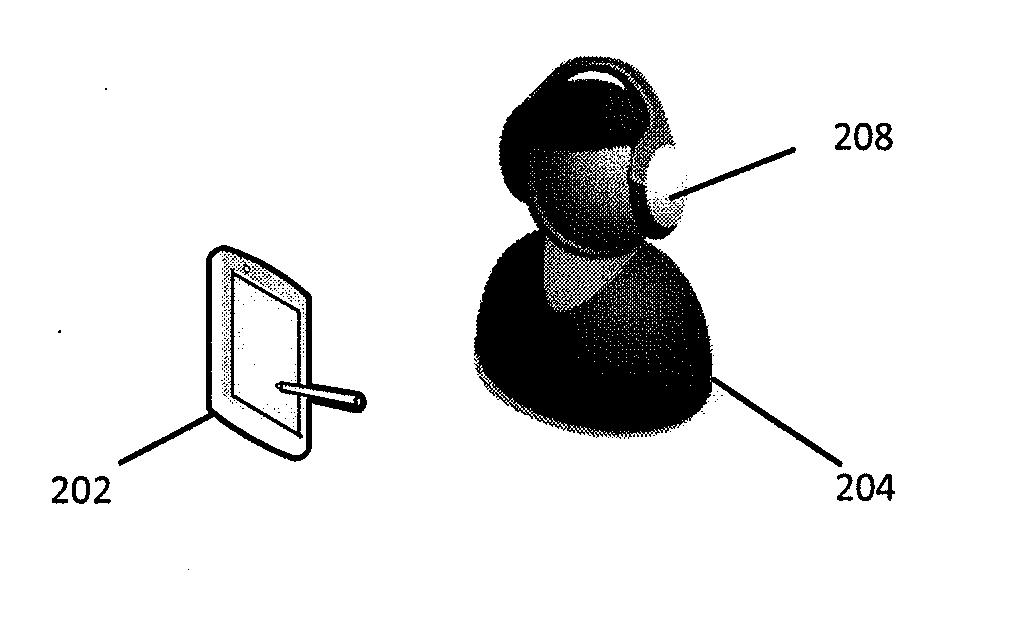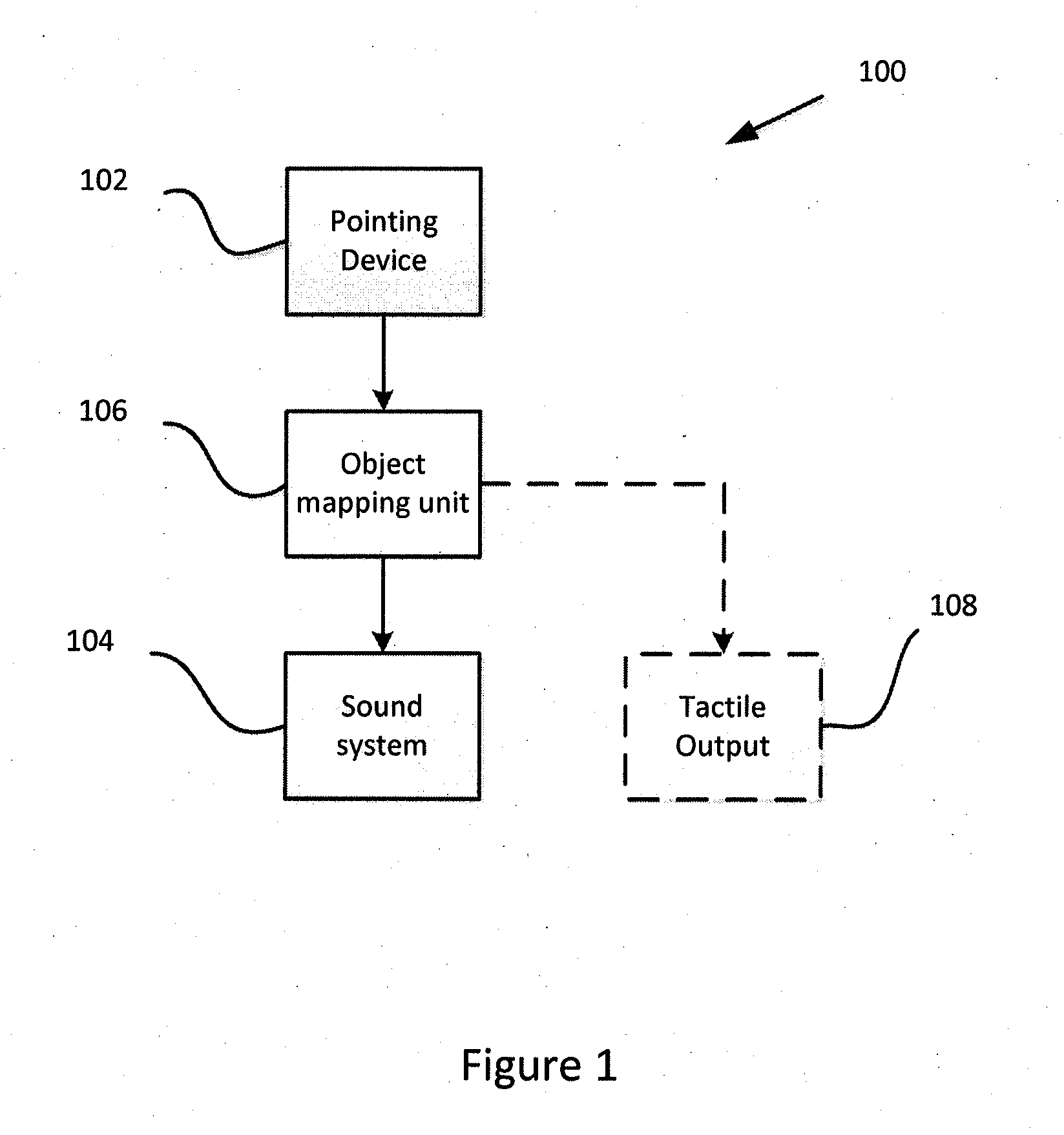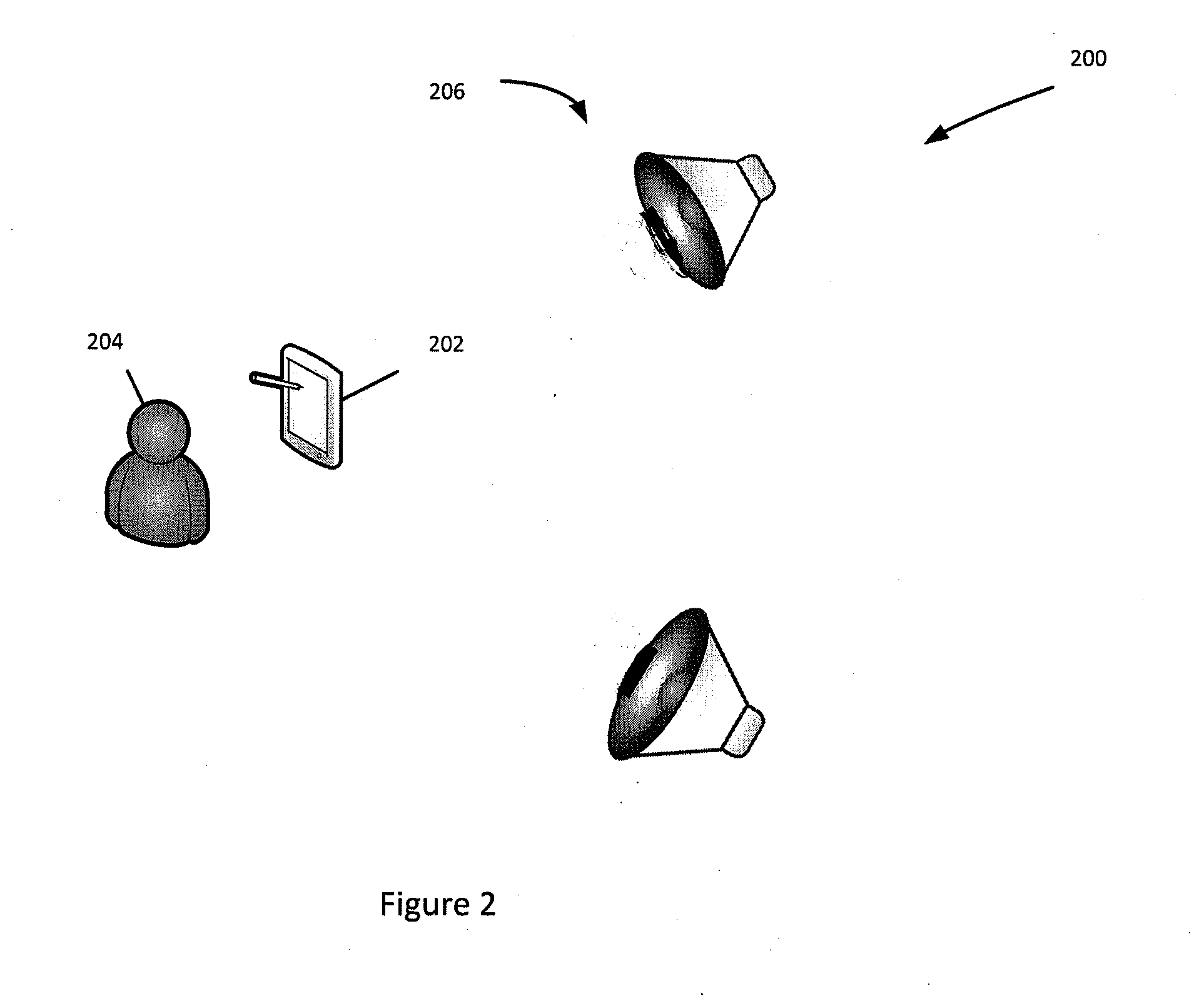Audio display system
a display system and audio technology, applied in the field of display systems, can solve the problems of remarkably slow recovery time, hard to utilize the visual impaired community in vs, and difficulty in keeping up with the visually impaired community
- Summary
- Abstract
- Description
- Claims
- Application Information
AI Technical Summary
Benefits of technology
Problems solved by technology
Method used
Image
Examples
embodiment 1
Shape Identification with Two or Three Constant Sounds
[0034]The screen is divided into two segments; inside the object and outside. One sound is played when the subject's scanning finger is inside the object and the other when finger is outside. We have shown that it is possible to identify simple shapes, a circle, a rectangle, and a triangle using two sine waves separated by an octave. All the inventors were able to determine the shapes after a few trials; a 12 year old easily found the shapes; others were also able to determine the shapes, some with difficulty, others with ease. In another embodiment, we improved object detectability by using wide-band natural sounds instead of sine waves, based on the observation (E. A. Björk, Laboratory annoyance and skin conductance responses to some natural sounds. Journal of Sound and Vibration 109 2 (1986), pp. 339-345) that humans show less annoyance to such sounds. In the third version, we added a narrow strip around the border of the obje...
embodiment 2
Shape Identification with Amplitude Modulation (Tremolo)
[0035]An amplitude modulation signal with varying rate and depth (depending on the finger's position), sometimes referred to as “tremolo,” is used. Two depth values, one inside and one outside the object are used. There is also a border region (strip) within each segment (object and background). The tremolo rate is constant within each segment, except when the finger enters the border region, where it increases as the finger approaches the border. Again, the changes near the border are intended to help the subject locate and follow the border.
embodiment 2a
Identification with Loudness
[0036]This configuration is a hybrid of configurations one and two. There are three segments (outside, border and inside), and to distinguish them we assign three different sounds to those three segments as we did in configuration one.
[0037]In this configuration, the volume of the sound played when the user's finger is in the border drops exponentially with the distance of the finger from the center line of the border, hence having the maximum volume at the center of the border and the minimum at the edges of the border. We like to see an analogy with raised line perception, where the raised line is a ridge which has the maximum relief at the center and relief decays exponentially with the distance from the center.
PUM
 Login to View More
Login to View More Abstract
Description
Claims
Application Information
 Login to View More
Login to View More - R&D
- Intellectual Property
- Life Sciences
- Materials
- Tech Scout
- Unparalleled Data Quality
- Higher Quality Content
- 60% Fewer Hallucinations
Browse by: Latest US Patents, China's latest patents, Technical Efficacy Thesaurus, Application Domain, Technology Topic, Popular Technical Reports.
© 2025 PatSnap. All rights reserved.Legal|Privacy policy|Modern Slavery Act Transparency Statement|Sitemap|About US| Contact US: help@patsnap.com



